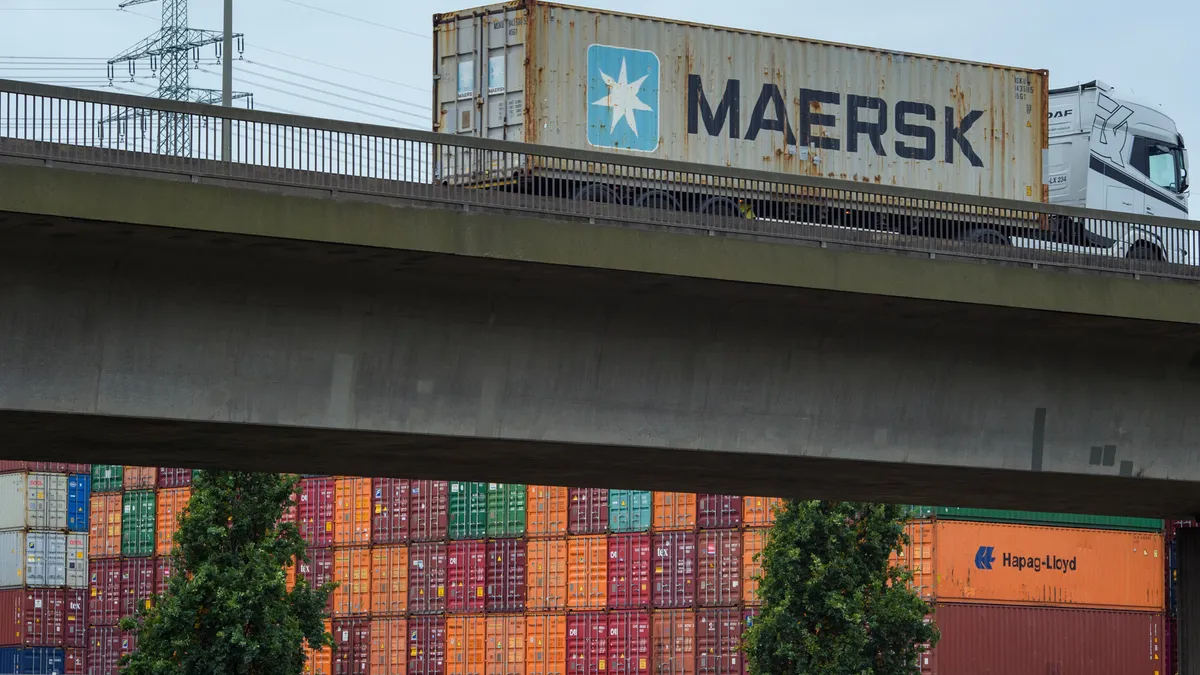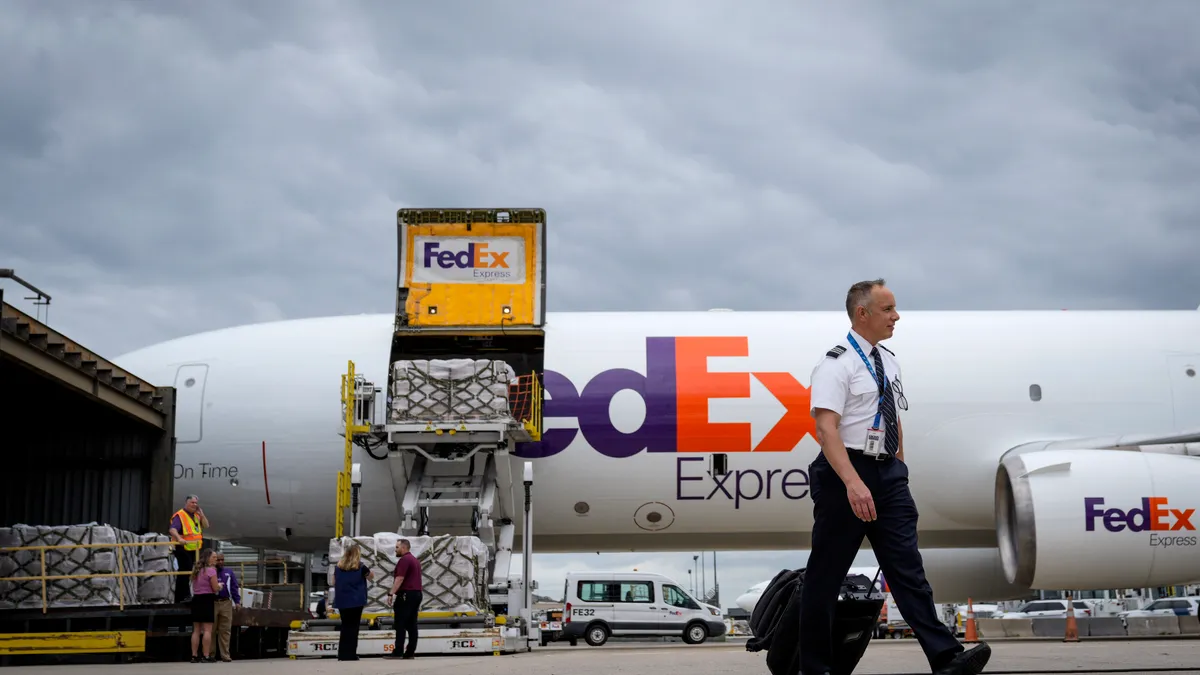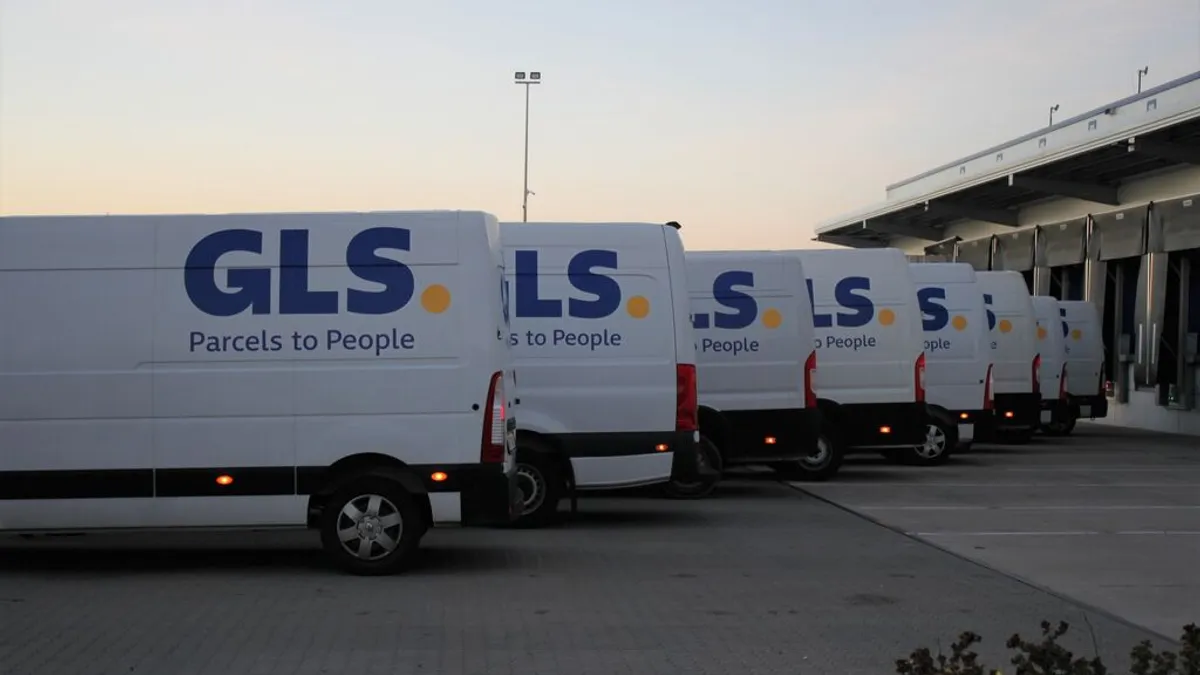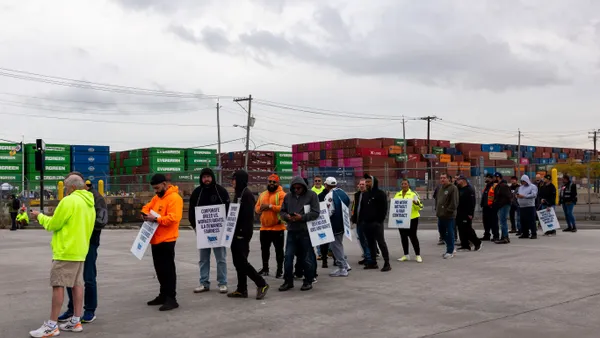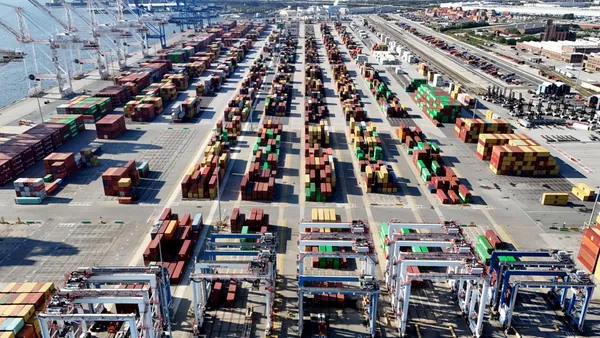Dive Brief:
- Maersk and Hapag-Lloyd announced their plans to enter into an agreement called Gemini Cooperation, set to start February 2025.
- The operational agreement between the two will have a fleet pool of around 290 vessels for a combined capacity of 3.4 million TEUs. Maersk will deploy 60% and Hapag-Lloyd 40% of that capacity.
- The network will cover seven trade lanes, including Asia – U.S. West Coast, Asia – U.S. East Coast and Transatlantic routes. It will total 58 new services and around 6,000 port-to-port combinations.
Dive Insight:
After Maersk and MSC announced last year that they were no longer extending the 2M alliance, shippers were left thinking about what will happen to capacity and rates.
With the Gemini Cooperation, Maersk and Hapag-Lloyd said that they will meet capacity needs for their customers "while increasing our ability to adjust and grow this capacity to meet demand fluctuations.”
In terms of rates, "This partnership and new network does not aim to increase costs. We will continue to set prices independently at competitive levels in line with the value our products and services provide to our customers," according to a Maersk press release.
Maersk and Hapag-Lloyd have set a target of 90% schedule reliability. The partnership plans to do so with fewer port calls to limit disruption, simplified vessel operator structure — meaning only one of the two is the sole operator of a vessel on mainline service to reduce complexity — and higher share of calls at APM terminals’ hubs.
The new agreement becomes effective a month after the 2M alliance ends. Hapag-Lloyd will be departing THE Alliance which is made up of Ocean Network Express, Yang-Ming, HMM and Hapag-Lloyd.
This leaves THE Alliance in a vulnerable position, Lars Jensen, CEO and Partner at Vespucci Maritime, said in a LinkedIn post on Wednesday.
"The pressure is then on these three carriers to either lure a new partner out from Ocean Alliance, or re-invent a new service concept," Jensen said.
Jensen also noted that the pressure is on other carriers such as CMA-CGM, COSCO, Evergreen and OOCL who are part of the Ocean Alliance.
"With the playing field having opened in this way each of these carriers will be asking themselves whether the current OA setup is ideal for themselves or whether a new constellation might be better,” Jensen said.
Editor's note: This story was first published in our Logistics Weekly newsletter. Sign up here.



